Idli is one of the most healthiest and popular South Indian breakfast dish. These are soft, light, fluffy steamed round cakes made with a ground, fermented rice and lentil batter. Here I share my foolproof recipe with video and step-by-step photos that will help you in making the best idli. This Idli recipe is one of the earliest recipe from the blog which has been tried and tested with great results by many of our readers.
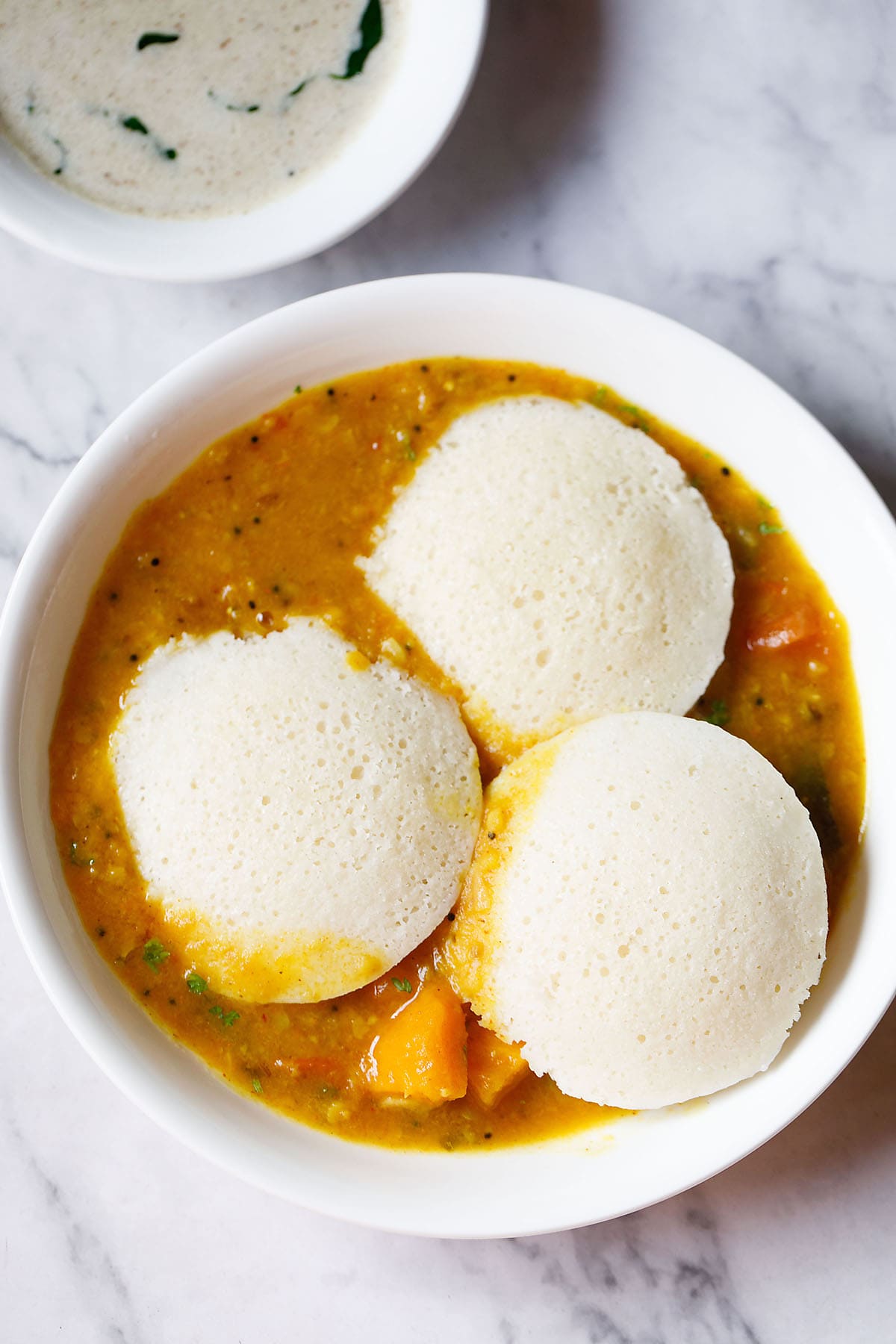
Table of Contents
What is Idli
Idli is a soft, pillowy steamed savory cake made from fermented rice and lentil batter. The lentils used in making the idli batter are urad dal (hulled black gram).
Black gram is also known as matpe beans, urad beans. To make idli the off white colored husked/hulled black gram is used – it can be split or whole.
The lentils and rice are soaked first and then later ground separately. The batters are mixed together and seasoned with salt.
The batter is allowed to ferment until it increases in volume. Later the batter is steamed in a special and unique cookware traditionally used for making idli.
Idli is a traditional breakfast made in every South Indian household including mine. Idli is popular not only in the whole of India but outside India too.
It is naturally vegetarian, vegan, gluten-free and makes for one of the healthiest breakfast options served with Sambar and Coconut Chutney.
Ways to make Soft Idli
Firstly there are two basic ways you can make idli with the traditional method of soaking the ingredients, grinding them to a batter and fermenting.
Of course there are many variations you can do with the basic batter like adding spices, herbs, veggies etc but the basic, simple fermented batter is made with rice or idli rava and urad dal.
- With Idli Rice: Traditionally idli rice and urad dal are used to make the idli batter. Idli rice is parboiled rice and used specifically for making idli and dosa. This recipe post shares the method of making idli with idli rice and regular white rice.
You can even make idli with short-grained rice. My mom makes one of the best idli with parmal rice. At times I also make idli with the traditional method of using only idli rice.
As I have mentioned above Urad dal is also known as black gram, urad bean and black matpe bean. With husks these lentils look black due to their black husks. With the husks removed they have creamish ivory or off white color and are also called as white lentils.
The urad dal that is used is the husked whole urad dal preferably unpolished. You can even use husked split urad dal. - With Idli Rava: A second easier way is to use idli rava with urad dal. Idli rava is coarsely ground idli rice and is easily available in shops and online.
- Soaking rice and lentils: For making simple traditional idli, both the rice and the urad dal are rinsed a couple of times with fresh water and soaked separately for 4 to 5 hours.
- Quality of rice and urad dal: Make sure to use both rice and urad dal within their shelf-period. Always use urad dal which is fresh and within its shelf-life. Aged urad dal does not ferment well and makes the idli dense.
- Grinding: Then the lentils (urad dal) are ground to a soft, fluffy batter and the rice to a semi-fine consistency. Both the batters are mixed and allowed to ferment.
- Grinding Equipments: The grinding of the batters, can be done in a table-top stone wet-grinder or in a mixer-grinder. Most South Indian families have a table top stone grinder that they trust to make a fluffy idli batter.
- Table top stone grinder: Grinding in a stone grinder is helpful if making a large quantity of idli batter. The advantage of grinding in a stone grinder is that the urad dal batter gets ground really well and thus the idli batter ferments also well.
The amount of water to be added in a stone-grinder is more than what is added in a mixer-grinder.
For ½ cup soaked urad dal, you can add about 1 cup water. Add water in parts while grinding urad dal. For 2 cups of soaked rice, add about 1.5 to 2 cups of water. - Mixer-grinder: The lentils also grind well in a mixer-grinder or heavy duty blender like Vitamix. For smaller quantities, a mixer-grinder or blender works like a charm.
Everyone does not have a stone grinder. So I have shared the detailed method on how to grind the batter in a mixer-grinder with plenty of tips and suggestions in the step-by-step guide below.
I have both a stone grinder and a mixer grinder. For smaller quantities, I use the mixie for grinding and for larger quantities I use the stone grinder. - Fermentation: Both the ground lentil batter and rice batter are mixed thoroughly. Then the batter is kept to ferment overnight or for 8 to 9 hours or more till the batter doubles or triples in volume having a pleasant sour aroma. The fermentation largely depends upon the temperature and climate. A warm temperature is conducive for a good fermentation in the batter.
- Steaming: Special pans are used to steam the idli. You can buy these pans online. This idli pan is brushed or greased with some oil. The batter is poured in the pan and then steamed.
- Steaming time: The steaming time varies from 12 to 15 minutes. Idli should never be oversteamed as then they become dry and dense.
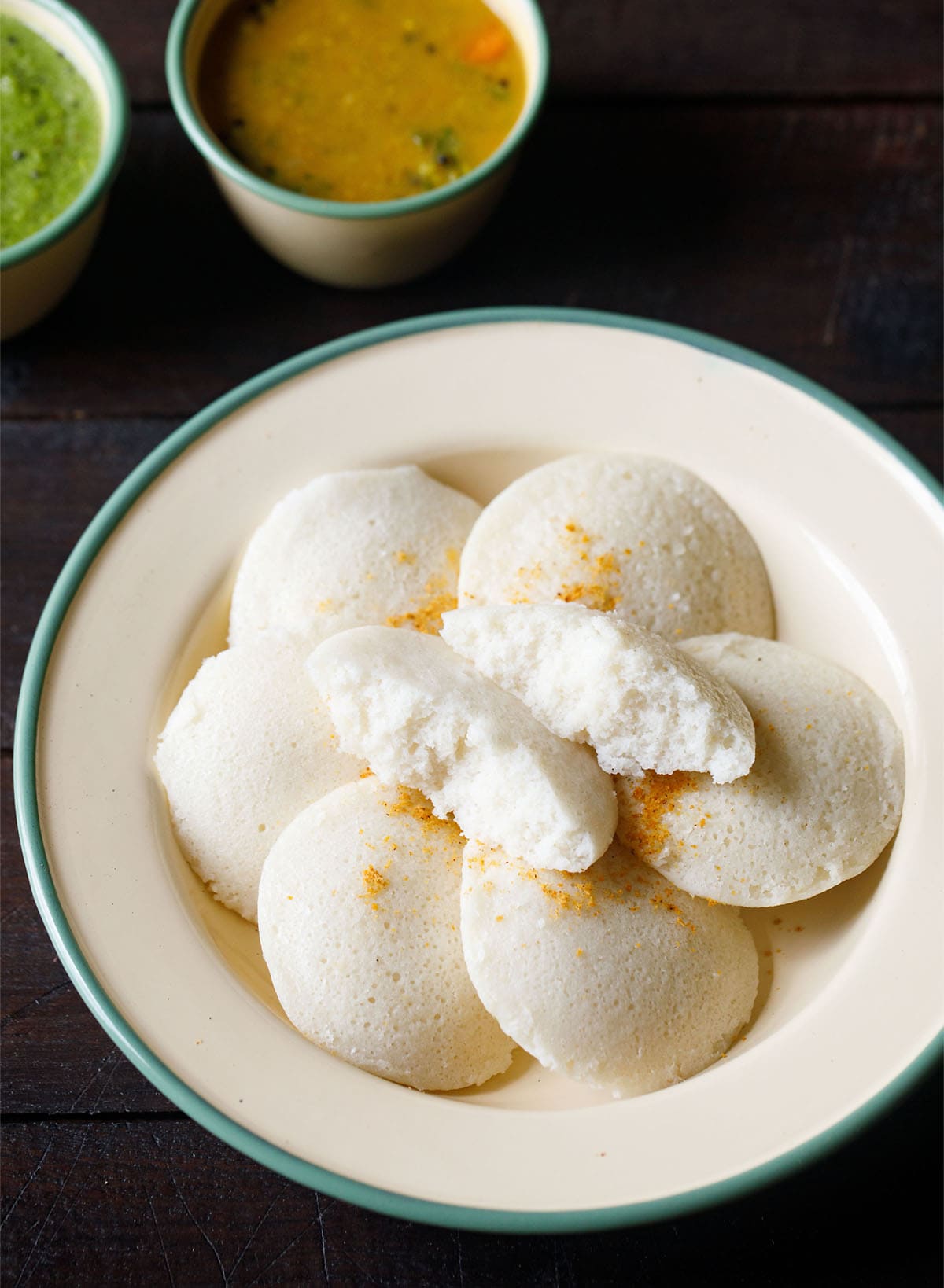
How to make Idli Batter
Soak Rice and Lentils
1. In a bowl or pan take 1 cup parboiled rice and 1 cup regular rice. Here I have used the Indian variety of sona masuri rice along with parboiled rice.
Instead of this proportion, you can also use overall 2 cups of idli rice OR 2 cups of parboiled rice (as shown in the video above).
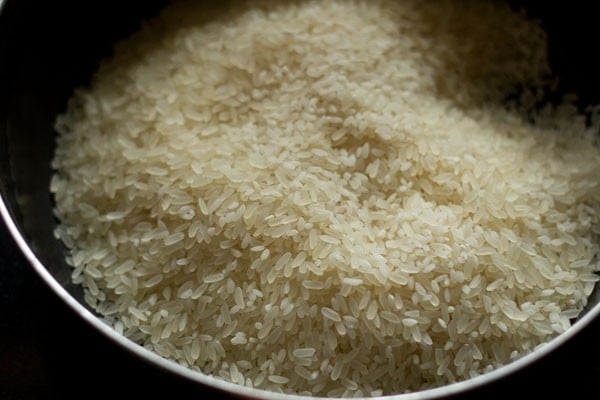
2. Pick and then rinse both the rice varieties a couple of times in fresh water. Drain all the water and keep it aside.
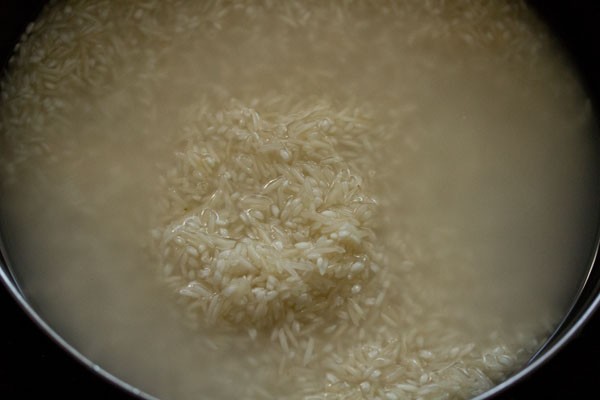
3. Take ¼ cup thick poha (flattened rice or parched rice) in a bowl. Poha helps in making the idli soft and fluffy. If you don’t have poha then you can skip it.
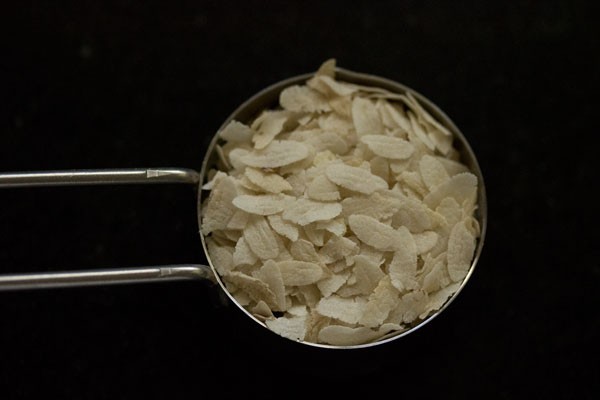
4. Rinse the poha once or twice with fresh water.
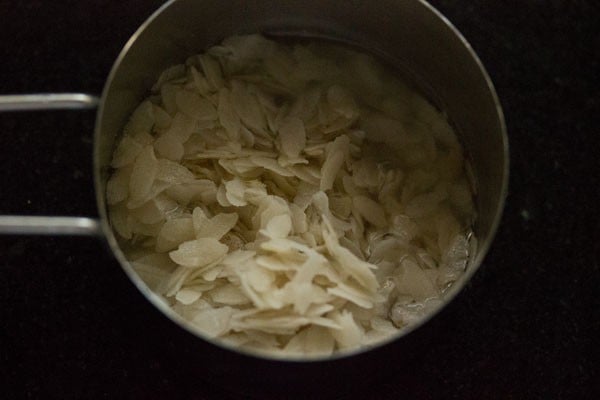
5. Then add the poha to the rice. Add 2 cups of water. Mix very well and keep aside covered to soak for 4 to 5 hours.
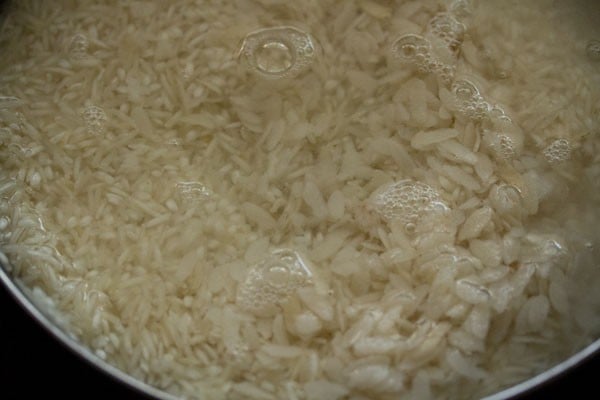
6. In a separate bowl take ½ cup urad dal (husked black gram) along with ¼ teaspoon fenugreek seeds.
Omit the fenugreek seeds if you don’t have them.
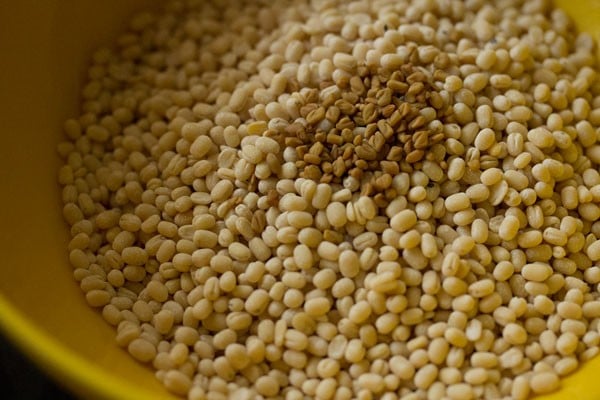
7. Rinse a couple of times in fresh water.
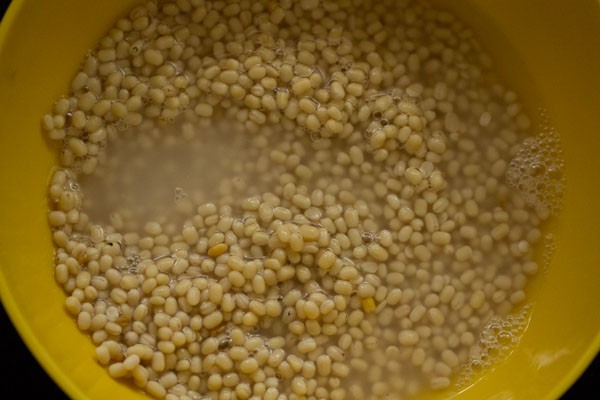
8. Add 1 cup water. Cover and soak for 4 to 5 hours.
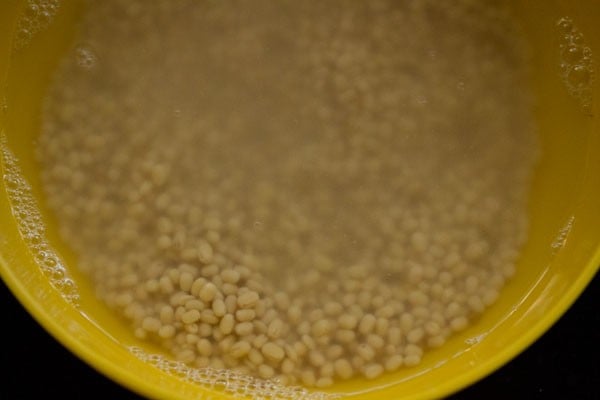
9. Before grinding, drain the water from urad dal, but don’t throw away the water. Reserve the soaked water as we will be using this water for grinding or you can use fresh water for grinding.
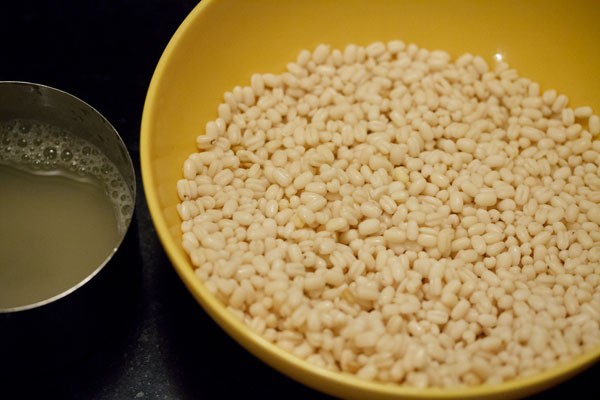
Grind or Blend Rice and Lentils
10. In a wet grinder jar, add the urad dal. Initially add ¼ cup of the reserved water or fresh water.
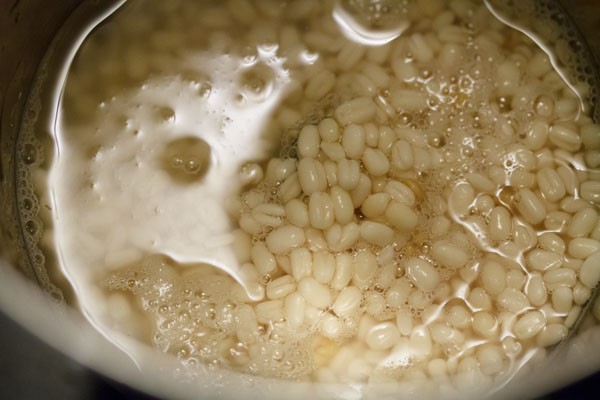
11. And grind the urad dal for some seconds. Then add ¼ cup of the reserved soaked water or fresh water and continue to grind. The batter should be light and fluffy when completely ground.
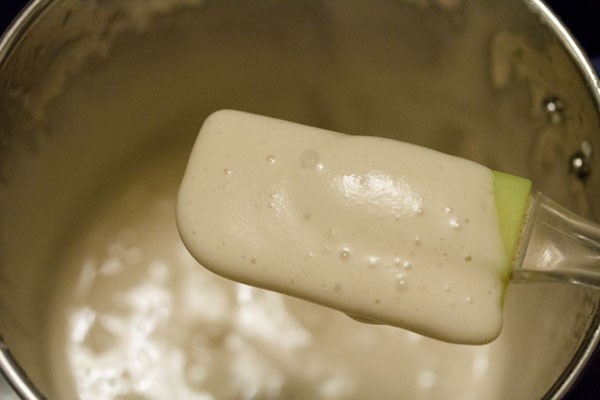
12: Pour the urad dal batter in a deep pan or bowl.
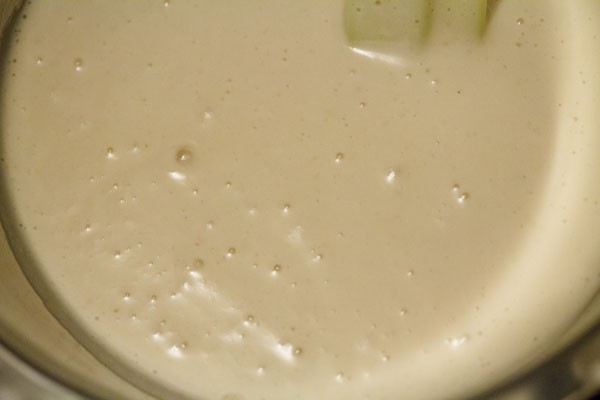
13: Drain the water from the rice and poha. Add them in the wet grinder jar or in a powerful blender. I usually grind in two batches.
Depending on the capacity of your mixer-grinder or blender you can grind in two to three batches. If the mixie gets heated up while grinding, then stop and let it cool. Then continue with the grinding.
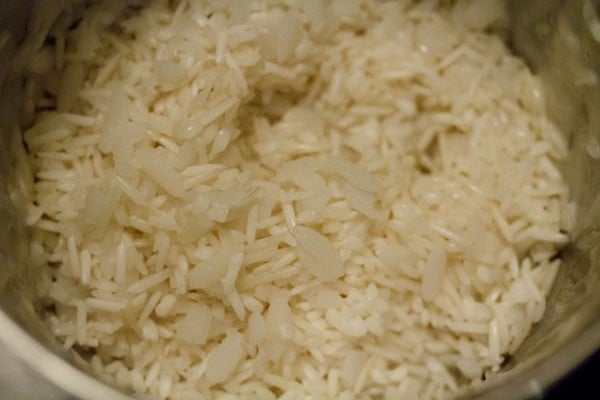
14: Use the reserved urad dal strained water or regular fresh water to grind the rice and poha too. Add water in parts and grind.
The rice can have a fine rava like consistency in the batter. A smooth batter is also fine. I usually add a total of ¾ cup of water while grinding rice. The rice batter should not be too thick or thin.
You can add about ¾ to 1 cup of water depending upon the quality of rice.
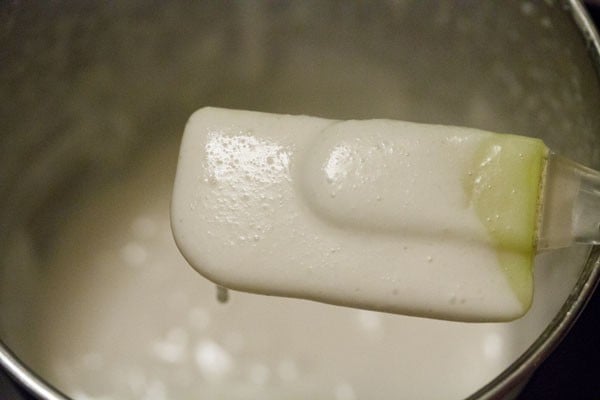
15: Now pour the rice batter in the bowl containing the urad dal batter.
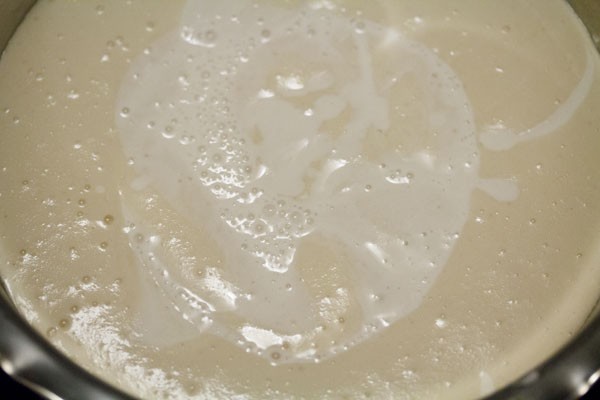
16. Add 1 teaspoon of rock salt. Mix very well with a spoon or spatula. If you live in a cool or cold region, then do not add salt. Add salt later once the fermentation is done.
If you live in a hot or warm climate, then add salt as it does not allow the batter to get over fermented in the time duration of 6 to 8 hours.
Note that salt retards the fermentation process.
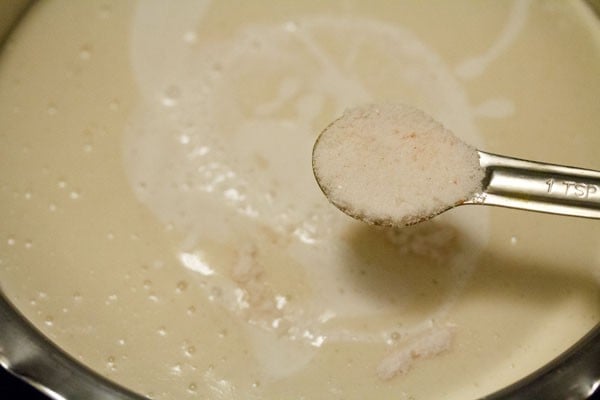
Ferment Idli Batter
17. Cover the bowl or container with a lid and keep the batter in a warm place. It should be left undisturbed for 8 to 9 hours. Don’t use an air-tight lid. In colder climate, keep the batter for a longer time – from 12 to 24 hours.
I have mentioned various tips below for the idli batter to ferment well. So do read this section below after step by step photos.
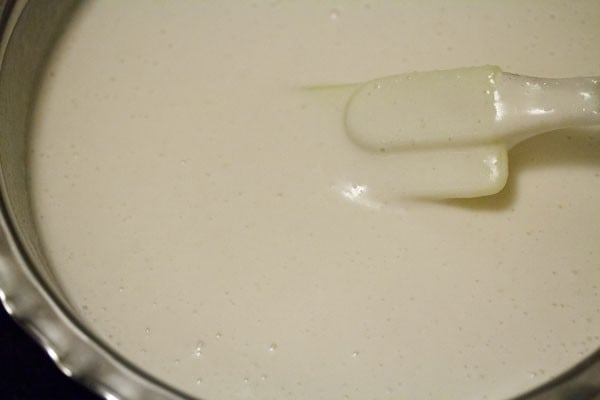
18. The batter the next morning. It will ferment and increase in volume. A well fermented idli batter will have a nice sour aroma with many tiny air pockets in the batter.
As soon as the batter is fermented you can begin with steaming the idli or keep the batter in the fridge if making later.
If you allow the fermented batter to remain at room temperature, it will ferment more and will become very sour with time.
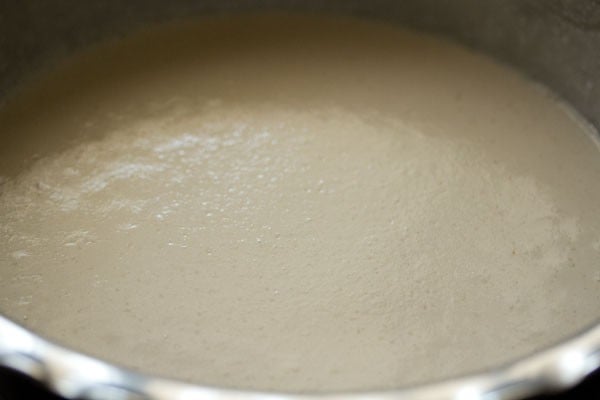
How to Make Idli
19. Grease or brush the idli mould with oil all over evenly. Gently and lightly swirl the batter. Don’t overdo. Now with a spoon pour portions of the batter in the greased idli moulds.
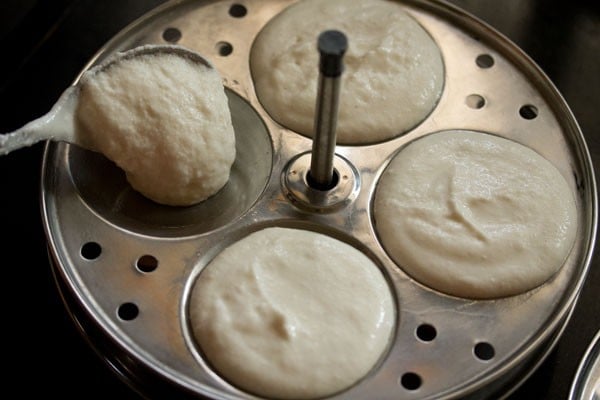
20. Take your idli steamer or pressure cooker or electric cooker or Instant pot. Add some 2 to 2.5 cups water and heat the water until it comes to a light boil. Keep the idli mould in the steamer or pressure cooker. Steam for 12 to 15 minutes.
Timing will vary depending on the kind of equipment you have used. If using a pressure cooker, then cover the pressure cooker with its lid. Remove the vent weight/whistle from the lid. Steam the idlis for approx 12 to 15 minutes.
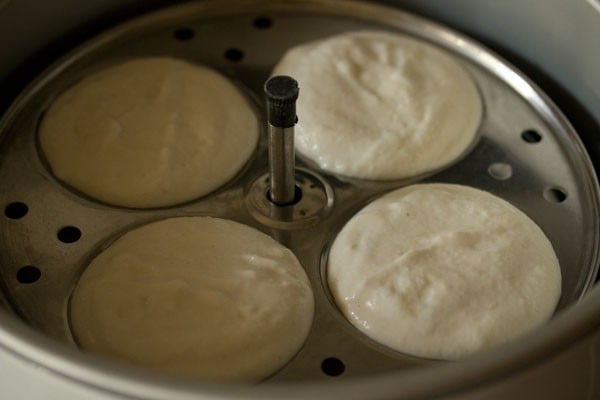
21. Check for doneness by carefully inserting a bamboo skewer or knife. If it does not come out clean, then keep again for a few more minutes.
When done remove the idli mould from the cooker. Don’t overcook as then they become dry. Dip a spoon or butter knife in water and slid them through the idlis. Remove and place the idlis in a warm container like a casserole.
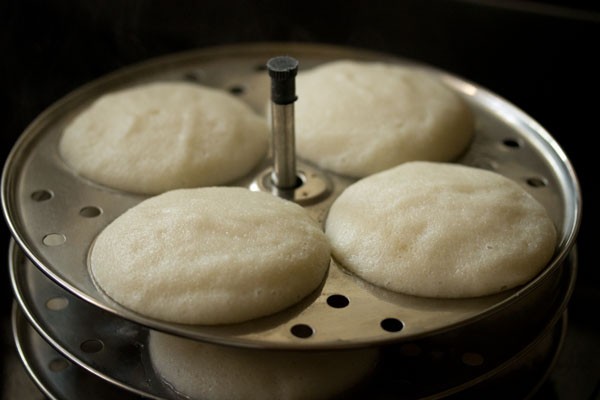
22. Serve Idli hot or warm with sambar and coconut chutney.
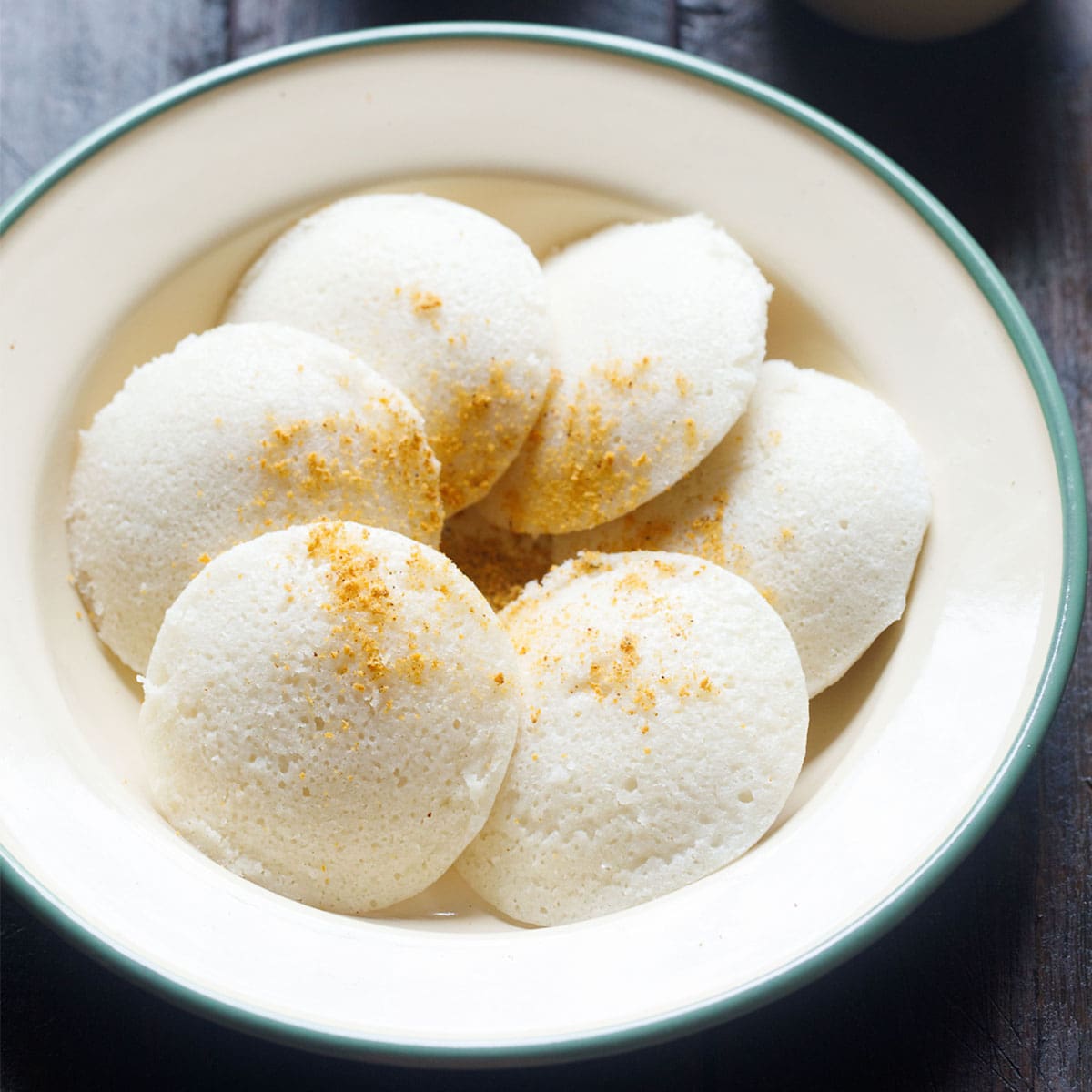
What to serve with Idli
- Idli is served with coconut chutney and sambar. Idli is dunked in sambar and eaten. There are quite a number of both sambar and coconut chutney varieties that one can make to go with idli. You can also idli with onion chutney, tomato chutney, peanut chutney and ginger chutney.
- Idli is also served with idli podi or gun powder. Idli podi is a condiment powder made with lentils and spices. If you do not have time to make sambar, then you can just serve idli with coconut chutney and idli podi. Idli can also be served with curd which has been spiced and tempered.
Variations with Idli Batter
There are many possible variations you can do with a basic idli batter. You can add lentils like moong dal and make moong dal idli.
Even millets, flattened rice (poha) can be added to the batter. Oats can also be added. I have shared Oats Idli. Experiment with proportions and then decide on the one which gives you the best idli in terms of texture and taste.
More Traditional Idli Varieties
Breakfast Recipes
South Indian Food Recipes
Breakfast Recipes
Evening Snacks
Expert Tips for Idli Batter Fermentation
Fermentation is a key factor in getting soft, light and fluffy idli. For proper fermentation of idli batter a warm temperature is apt. In cold climates, fermentation does not happen well. I get a lot of queries on how to ferment idli or dosa batter in winters. So I have summarized my experiences in the following points below:
- Warmth: Keep the idli batter bowl in a warm place – e.g near a heater or in a warm place in your kitchen.
- Oven: You can also preheat your oven at a low temperature (80 to 90 degrees celsius) for about 10 to 15 minutes. Then switch off the oven and keep the batter bowl inside – I use this method when it becomes very cold outside.
- Lights in the oven: Alternatively, if your oven has lights, then keep the lights on and place the batter inside.
- Sugar: Addition of a bit of sugar does help in fermenting the batter. So I use this method at times in the winters here.
- Salt: During winters, skip adding salt to the idly batter as salt retards the fermentation process. It is better to use rock salt or sea salt. I always use rock salt in the idli batter.
- Fermentation time in cold winters: In winters, keep the batter for a longer time to ferment, like 14 to 24 hours or more. Do remember that even if you do not see the batter doubled or tripled, you should see tiny bubbles in the batter. You should also get the typical faint sour fermented aroma from the idli batter.
- Instant Yeast: You can even add ¼ to ½ teaspoon of instant yeast (dissolved in 2 to 3 teaspoons of water) 30 to 45 minutes before you steam the idli. But do this method when the batter has not fermented well. The downside of this method is that you have to use all the batter at once. If you refrigerate than the batter gets too yeasty and sour.
- Baking Soda: You can also add ¼ to ½ teaspoon baking soda and then ferment the batter in cold seasons.
- Fenugreek seeds: Addition of fenugreek seeds (methi seeds) also helps in fermentation.
- Urad dal batter consistency: Urad dal has to be ground really well. Urad dal batter has to be soft, light and fluffy. So I suggest to grind both urad dal and rice separately to get soft and fluffy idli. A well ground urad dal batter also helps in fermentation.
- Amount of water: Also do remember to add the correct amount of water in the batter. If the water is less, then the idli will become dense.
- Fermenting idli batter in Instant Pot: In cold seasons I use the Instant Pot for fermenting the batter. Use the yogurt option and use the less mode. Place a small trivet in the IP steel insert. Keep the bowl with the batter on the trivet.
Keep the vent position to venting or you can use the Instant Pot glass lid. Set the time for 7 to 8 hours. On warmer days, the batter will ferment quickly. On colder days, it may take a few more hours for the batter to ferment in the Instant Pot.
Idli Batter vs Dosa Batter
Both idli and dosa batter are made from rice and lentils. Idli batter is more thick in consistency than a dosa batter. To make dosa, the batter is spread on the tava (griddle) and thus needs to have a slight flowing and spreadable consistency.
- For idli batter the ratio to be used is 4:1 of rice and lentils. From this 4:1 ratio of idli batter, you can even make dosa. I always use the proportion of 4:1 to make idli. the proportion of rice and urad dal is always a matter of controversy. So I suggest experiment with different types of rice and come to your own standard measurements which will give you perfect idli.
- For dosa, the ratio that is generally used is 3:1 of rice and lentils. Also do not that for making dosa batter, you can easily use rice like sona masuri, parmal rice or can even use idli rava instead of idli rice.
Idli is a breakfast I have grown up with. On every weekends, soaking rice & lentils, then preparing idli batter was a regular ritual. Every sunday, I knew we would get piping hot idli or soft dosa for breakfast along with chutney and sambar.
Initially, when preparing idli for the first time, I ran into problems. But now after so many years of experience, I can make really good idli and dosa.
For a more softer texture in idli, I always add thick poha (flattened rice) or cooked rice. This is optional and you can skip adding poha. You could also steam idli in a damp muslin cloth. Steaming idli this way also gives a soft texture.
With this recipe of idli batter, you can also make crisp dosas. You can use this batter on the same day, the batter is fermented to make dosas. Or else you can make idli on the first day and make dosa or uttapams on the second day. serve idli hot or warm with sambar and coconut chutney.
I have also attached a video (2.08 minutes quick video). In the video I have shown the preparation of idli with 2 cups of idli rice. But you can even use 1 cup of regular rice and 1 cup of parboiled rice.
Leftover Idli Ideas
At times there is an extra or surplus of idli left. You can use these idli the same day to make a new recipe or refrigerate them and use the next day. With leftover idli you can make the following recipes.
Tasty Leftover Idli Recipes
Snacks Recipes
Evening Snacks
Snacks Recipes
Breakfast Recipes
Please be sure to rate the recipe in the recipe card or leave a comment below if you have made it. For more vegetarian inspirations, Sign Up for my emails or follow me on Instagram, Youtube, Facebook, Pinterest or Twitter.
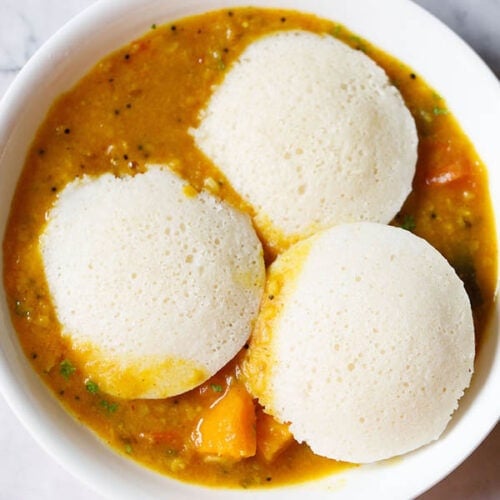
Idli Recipe (With Homemade Idli Batter)
Ingredients
- 1 cup regular rice + 1 cup parboiled rice or 2 cups idli rice or 2 cups parboiled rice
- ½ cup whole or split urad dal – 120 grams whole or split urad dal (husked black gram)
- ¼ cup thick poha – 20 grams (flattened rice)
- ¼ teaspoon fenugreek seeds (methi seeds)
- 2 cups water – for soaking rice
- 1 cup water – for soaking urad dal
- ½ cup water – for grinding urad dal or add as required
- ¾ to 1 cup water – for grinding rice or add as required
- 1 teaspoon rock salt (edible and food grade) or sea salt
- oil – as required to apply to the idli moulds
- 2 to 2.5 cups water – for steaming idli
Instructions
Soaking rice and lentils
- Pick and rinse both the regular rice and parboiled rice.
- Rinse the poha and add to the rice.
- Add water. Mix well. Cover and keep the rice + poha to soak for 4 to 5 hours.
- In a separate bowl, rinse the urad dal and methi seeds a couple of times.
- Soak the urad dal with methi seeds separately in water for 4 to 5 hours.
Making idli batter
- Drain the soaked urad dal. Reserve the water.
- Grind the urad dal, methi seed with ¼ cup of the reserved water for some seconds. Then add remaining ¼ cup water. Grind till you get a smooth and fluffy batter.
- Remove the urad dal batter in a bowl and keep aside.
- Grind the rice in batches to make a smooth batter.
- Mix both the batters together in a large bowl or pan. Add salt and mix well.
- Cover and let the batter ferment for 8 to 9 hours or more if required.
- After the fermentation process is over, the idli batter will become double in size and rise.
Steaming idli
- Grease or brush the idli moulds evenly with oil.
- Pour the batter in the moulds and steam the idli in a pressure cooker or steamer.
- If using pressure cooker remove the vent weight (whistle).
- Steam for 12 to 15 mins or until the idli is done.
- Serve the steaming hot idli with coconut chutney and sambar.
- Remaining batter can be stored in the refrigerator for a couple of days.
Video
Notes
- For regular rice variety – you can use sona masuri rice or parmal rice or basmati rice.
- Note that the approximate nutrition info is for 1 medium-sized idli served as is without chutney or sambar.
-
Fermentation is one of the main factors to get soft, light and fluffy idli. Fermentations tips for winters listed below.
- Warmth: Place the idli batter bowl in a warm place – e.g near a heater or in a warm place in your kitchen.
- Oven: Preheat your oven at a low temperature (80 to 90 degrees celsius) for about 10 to 15 minutes. Then switch off the oven, keep the batter bowl inside and close the door.
- Lights in the oven: If your oven has lights, then keep the lights on and place the batter inside.
- Sugar: Adding a bit of sugar does help in fermenting the batter. In this recipe you can easily add upto 1 teaspoon sugar and don’t worry – the idli won’t be sweet.
- Salt: During winters, skip adding salt to the idly batter as salt retards the fermentation process. Rock salt and sea salt are good options to add in the idli batter.
- Fermentation time in cold winters: In winters, keep the batter for a longer time to ferment, like 14 to 24 hours or more. Do remember that even if you do not see the batter doubled or tripled, you should see tiny bubbles in the batter. You should also get the typical faint sour fermented aroma from the idli batter.
- Instant Yeast: You can even add ¼ to ½ tsp of instant yeast (dissolved in 2 to 3 teaspoons of water) 30 to 45 minutes before you steam the idli. But do this method when the batter has not fermented well. The negatives of this method is that you have to use all the batter at once. Even refrigerating this batter makes it very yeasty and sour.
- Baking Soda: You can also add ¼ to ½ baking soda and then ferment the batter in cold seasons.
- Fenugreek seeds: Addition of fenugreek seeds (methi seeds) also helps in fermentation.
- Urad dal batter consistency: Urad dal has to be ground really well. Urad dal batter has to be soft, light and fluffy. So I suggest to grind both urad dal and rice separately to get soft and fluffy idli. A well ground urad dal batter also helps in fermentation. Also use urad dal which is fresh and within its shelf-life. Aged urad dal does not ferment well and makes the idli dense.
- Amount of water: Do remember to add the right amount of water in the batter. If the water is less, then the idli will become dense.
- Fermenting idli batter in Instant Pot: Press the yogurt option and use the less mode. Place a small trivet in the IP steel insert. Keep the bowl with the batter on the trivet. Keep the vent position to venting or you can use the Instant Pot glass lid. Set the time for 7 to 8 hours. On warmer days, the batter will ferment quickly. On colder days, it may take a few more hours for the batter to ferment in the Instant Pot.
Nutrition Info (Approximate Values)
This Idli Recipe post from the archives was first published on April 2012. It has been updated and republished on March 2023.
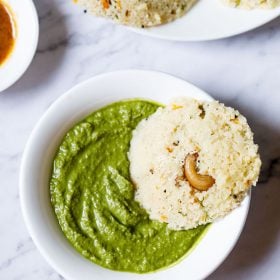
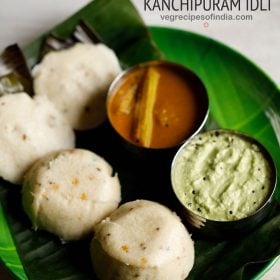
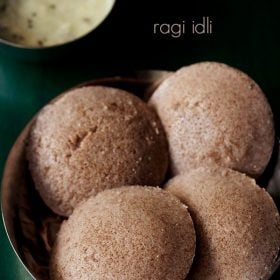
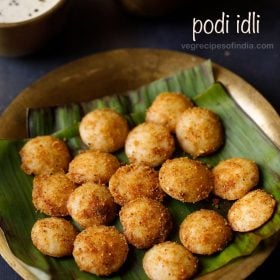
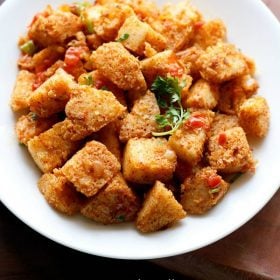
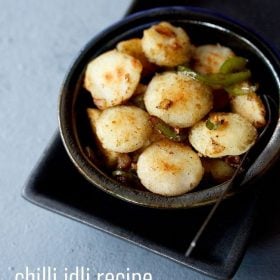
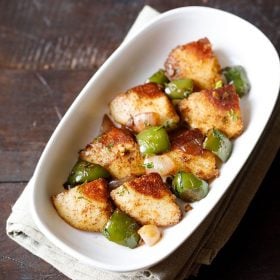
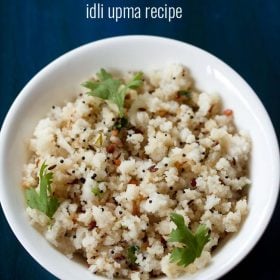











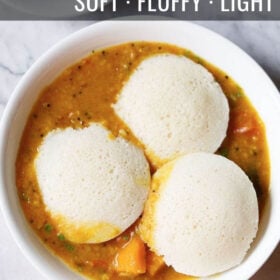
Hi Dassana,
Many thanks for this recipe. I made it (both iddli and thosai ) yesterday and they came out perfectly. I have been searching for an iddli and thosai recipes for ages and have tried many but none worked out. This is the best. I won’t be buying prepackaged mixes again.
One small problem I had was that the iddli stuck to the molds. I just rubbed a very small amount of oil with my finger as I don’t want to use too much oil. Also it was olive oil. Any suggestions on this?
Again many thanks for the recipe with all the detailed pictures. It was so easy to make. I have put another batch to soak today.
hi priyanthi. this is so nice to hear. am glad that the recipe worked for you.
i would suggest to add a little bit more oil to the idli moulds. you can also grease the moulds overnight and keep. better to use sunflower oil as that is what i use when making idlis. another option would be to steam the idlis in a moist muslin cloth.
Thanks
welcome priyanthi
Thanks a lot,
Your recipes are very easy to learn as its step by step and with pics.
M.imp your way of explaining seems to be a friend or sister teaching personally.
I am enjoying all your blogs.
Thank you
thanks neha for your sweet comment.
Nice Guide Dassana! I have only had once Idlis and thats ages ago, maybe I should try making my own some times. Thanks for sharing the detailed recipe and tips!
PS: Love your new blog design!
thanks helene 🙂
Hi,
I also tried your idlis and they came up very well. Thanks a ton for this receipe. You made my day.
But one thing, I want to ask though I kept the remaining unused batter in the fridge, still it became sour, please guide me on this. I soak the rice and urad dal for 5 hours and leave it for ferment 8 hours, is this right?
Thanks
thanks nipa. soaking for 4-5 hours is alright and fermenting time is also alright. i used to have this issue of batter becoming sour but now it does not happen. what you do is you take the required amount of batter you need for making the idli or dosa and then keep the remaining covered in the fridge. when you want to make next time, again take the required amount of batter in another bowl and keep the rest again in the fridge. if you use the same bowl or pan for making the idli or dosa and then the souring happens. even i don’t know the exact reason for this. but this method works for me.
hi dassana, tried your bhel puri at home …it was great. now since i am from tamil nadu i would like to say that we dont make idly from basmati rice,we use idly rice .ratio of the rice to the urad dal should be 5:1.fenugreek can be used.
i know anu, in south they don’t make idlis from basmati rice. but if you have lived in the north, then it is not easy to get idli rice there. so the only option is to make idli with some other variety of rice or basmati rice. when i was living in north india, i have made idlis with basmati rice 🙂
thanks for sharing the ratio too. the ratio depends from a person to person and what works out with them in the given temperature conditions. personally i have never tried 5:1 ratio and i am going to try this soon.
hi Dassana,
your explanations and tips are too good could not stop myself frm commenting…enjoyed ur site…
thanks vishma
i think by this idlis will not be that white. How the whiteness can be increased
since i have added red parboiled rice, the idlis will obviously be not white. just use the white colored parboiled rice or idli rice. then the idlis will be white 🙂
Oh, finally I feel like I have the key to making good idli! Thank you so much, and the pictures are super helpful.
One VERY IMPORTANT question that I have for you – how much water to put in the pressure cooker when you steam them? And do you set the idli pan directly on the bottom of the pan, or on a triveet?
thanks sara. you can add so much water with a gap of about 1.5 inches between the water and the lower idli mould rack. i generally don’t use a trivet. but you can use it… no issues there.
I always wanted to know the secret of fermenting the dosa batter .with all your tips you have no idea how happy i am …………………….i w’ll try soon.dear dassana,can you please send some tips to ferment the batter for khaman (chana dal+yogurt) please. now i feel like your my cook book guru thank you so much.
thanks for your lovely words hemlata. the fermentation process works in the same way. i have never ever made dhokla by fermenting the batter. i usually make the instant dhokla. but i will give a try to make the dhokla by fermenting the batter.
What is the difference between boiled rice and par-boiled rice ?
i think technically both rices are parboiled and then husked. but boiled rice is eaten as rice with sambar, curries in kerala & karnataka. conjee or pej as we call it is also made from boiled rice. it is usually thick and reddish brown in appearance. whereas parboiled rice is used to make idlis, dosa and is white or creamish in appearance. the rice that i have used in this recipe is a variety of goan boiled rice.
I made idlis last sunday. idlis were so soft and tasty. i tried it first time as per your recipe and it was superb
thats nice to know smita. feels good.
PLEASE GIVE US SOME TIPS ON MAKING PARAATHAAS AND CHICKEN KURMAA AT HOME. HOTEL PARAATHAAS ARE RATHER OILY AND SOURCE OF OIL UNKNOWN.
WHAT IS THE MEANING OF ” YOUR COMMENT IS AWAITING MODERATION”?
it means that your comment will be approved and then it gets displayed on the post.
i shall post the tips on making parathas in some time. i do not make chicken dishes at home. so for a chicken kurma you will have to search on google.
IDLY IS A WHOLESOME MEAL FOR THE BREAKFAST.THIS PROVIDES ALL THE NECESSARY VITAMINS ALONG WITH THUVAR DAAL- SAAMBAR AND URAR DAAL IN THE IDLY ALONG WITH THE GOODNESS OF COCONUT CHUTNEY.ELDERS AND CHOLESTEROL CONSCIOUS PERSONS CAN AVOID THE COCONUT CHUTNEY. BUT THE THUVAR DAAL SAAMBAAR IS VERY GOOD AND IT IS FULLY VEGETARIAN.
PEOPLE WHO USE PRESSURE COOKERS PLEASE MAKE SURE THAT THE LID OR THE WHISTLE SHOULD BE REMOVED WHILE STEAMING. IT SHOULD NOT BE COOKED LIKE RICE WITH THE LID ON.
thanks for the bit of info celine.
I love idlis but really suck at making them. This post is so well done. I love the step by step method. Your idlis look awesome! Going to try this recipe for sure. Thanks for the recipe.
pls also tell me proper ratio of idli rava with urad dal and for without parboiled rice can we make normal rice like sona masori only or kolom rice for idli nd dosas, nd for rava idli also plsssss.
dear pinky
you can use the foll ratios:
2 cups idli rava
1/2 cup urad dal or 3/4 cup urad dal
1/4 cup poha
you can make idlis or dosa with regular rice varieties like sona masoori or kolam. our maid which i have mentioned in the post above would make the soft idlis with kolam rice. even i have made soft idlis and dosa both with sona masoori and kolam.
thanks ,
dassana i will try this then i will let u know abt my experience.
bye
sure pinky. do let me know.
hi,
dassana
thanks, i made idli and dosas as per ur recipes , both were very very nice , i was so happy
that at last i made good idly and dosa and whole credit goes to u dassana, first i was depressed when i saw my batter which was not so fermented as i expected but then i tried both nd both were good.
hey dassana i took 2nd half cup of normal rice nd 1 cp of urad dal ,1 cup poha and little bit methi seeds , may be cause of this ratio my batter did not fermented as i expected is this so pls tell me.
byeeee
dear pinky
nice to know that both idlis & dosas were good.
the proportion of rice and urad dal is alright. but the quantity of poha is more. just a handful of poha is needed to make the idlis soft. at the most you can add 1/2 cup poha.